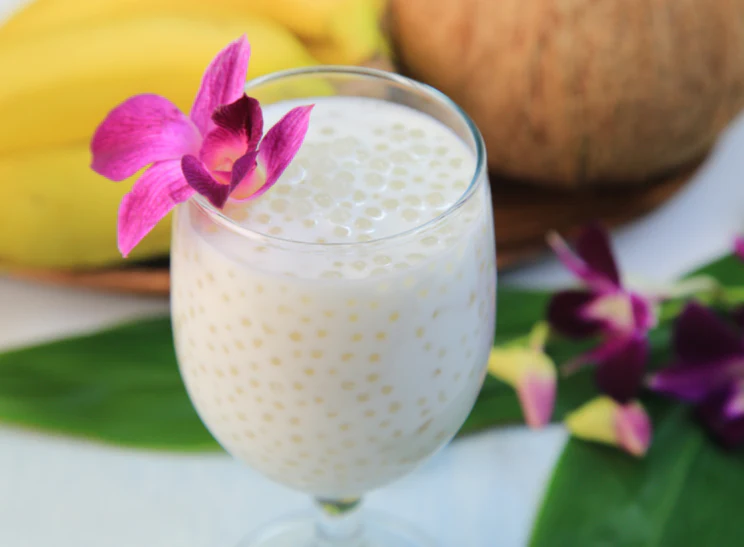Tapioca, a starch extracted from the cassava root, plays a significant role in global cuisine, food processing, and industrial applications. Known for its versatility, affordability, and gluten-free characteristics, tapioca is an essential agricultural commodity in many tropical and subtropical countries. But one pressing question emerges in academic and commercial circles: Which country is the largest tapioca producer in the world?
The answer: Thailand.
In this detailed exploration, we will uncover why Thailand holds the crown as the largest tapioca producer globally, examine its production systems, evaluate global trends, and assess the economic and environmental impact of tapioca cultivation.
What Is Tapioca?

Tapioca is derived from the Manihot esculenta plant, also known as cassava or manioc. Native to South America, cassava spread to Africa and Asia through colonial trade routes and quickly became a staple crop. Tapioca itself is the purified starch extracted from the cassava root, typically in the form of pearls, flakes, or flour.
Tapioca is widely used in:
- Food and beverages (puddings, bubble tea, baked goods)
- Industrial applications (textiles, adhesives, biodegradable plastics)
- Animal feed
- Gluten-free products
Its low cost, long shelf life, and neutral flavor make tapioca an indispensable resource worldwide.
Global Tapioca Production Overview

While cassava is grown in over 100 countries, tapioca starch production is heavily concentrated in a few tropical nations. The top producers include:
- Thailand
- Nigeria
- Brazil
- Indonesia
- Vietnam
These countries benefit from favorable climates, cheap labor, and strong agricultural infrastructure. However, when it comes to processing cassava into tapioca, Thailand is the undisputed leader.
Thailand: The World’s Largest Tapioca Producer

Production Volume
Thailand is the largest global producer and exporter of tapioca starch. As of the latest available data:
- Thailand produces over 30 million tons of cassava annually
- Around 80% of this is processed into tapioca starch
- It exports more than 70% of its tapioca starch output, with major markets in China, Japan, and the EU
In 2024, Thailand contributed approximately 60% of the world’s tapioca starch exports.
Why Thailand Leads
Several factors explain Thailand’s dominance in tapioca production:
1. Favorable Climate and Land Use
Thailand’s tropical climate is ideal for cassava cultivation. The crop thrives in poor soil conditions and tolerates drought better than rice or corn, making it especially suited for northeastern Thailand.
2. Government Support
The Thai government has historically supported cassava farmers through subsidies, improved irrigation, and price stabilization policies. Research institutes such as the Thai Tapioca Development Institute (TTDI) work closely with farmers and industry players to improve yield and quality.
3. Advanced Processing Infrastructure
Thailand has a highly developed tapioca starch processing sector. Over 90 large-scale starch factories operate across the country, using modern technology to ensure high-quality output. The vertical integration of farms and factories enhances efficiency.
4. Strong Export Orientation
Thailand views tapioca as a strategic export product. With limited domestic consumption, the country aggressively targets international markets, especially China, which imports over 4 million tons of tapioca starch annually for use in paper, textiles, and food industries.
Comparison with Other Major Producers

Nigeria
Nigeria is the world’s largest producer of raw cassava, growing over 60 million tons annually. However, much of Nigeria’s cassava is consumed domestically as a staple food (e.g., garri, fufu). Due to underdeveloped infrastructure and limited industrial processing, Nigeria lags behind in tapioca starch production.
Brazil
Brazil ranks third globally in cassava production but primarily uses the crop for animal feed, flour (farinha), and ethanol. Tapioca production exists but at a smaller scale compared to Thailand.
Indonesia and Vietnam
Both countries have growing tapioca sectors, especially Vietnam, which is a major tapioca exporter. However, Thailand still surpasses them in volume, processing capacity, and export reach.
Economic Impact of Tapioca in Thailand

Tapioca is a lifeline for over 500,000 farming households in Thailand. It plays a pivotal role in:
- Rural employment and income generation
- Export earnings (over $3 billion USD annually)
- Strengthening the agri-industrial base
The industry also stimulates demand for machinery, transportation, and packaging—creating a multiplier effect in the economy.
Environmental Considerations
While tapioca has many economic advantages, its cultivation and processing are not without challenges:
- Deforestation and land degradation: Expansion of cassava cultivation has led to deforestation in some areas.
- Soil nutrient depletion: Cassava is a nutrient-exhaustive crop.
- Water usage and effluent discharge: Tapioca factories generate high volumes of wastewater.
Thailand has responded by promoting sustainable practices, such as:
- Using cassava waste as biogas fuel
- Recycling water in processing plants
- Developing drought-resistant cassava varieties
Future Outlook
The global demand for tapioca starch is expected to grow due to:
- Increasing gluten-free and clean-label food trends
- Rising consumption of Asian cuisines globally
- Industrial demand in textiles, pharmaceuticals, and biodegradable plastics
Thailand is investing in research and innovation to maintain its leadership, including:
- Genetic improvement of cassava
- Automation in farming and processing
- Export diversification to new markets in Africa and the Middle East
Conclusion
To summarize, Thailand is the largest tapioca producer in the world, driven by a combination of climatic advantages, government support, advanced processing capabilities, and robust export strategies. Despite fierce competition from countries like Nigeria and Vietnam, Thailand remains at the forefront of global tapioca production.
As demand for tapioca continues to grow—both in food and industrial sectors—Thailand’s proactive and sustainable approach ensures it retains its leadership role in this crucial global commodity market.





